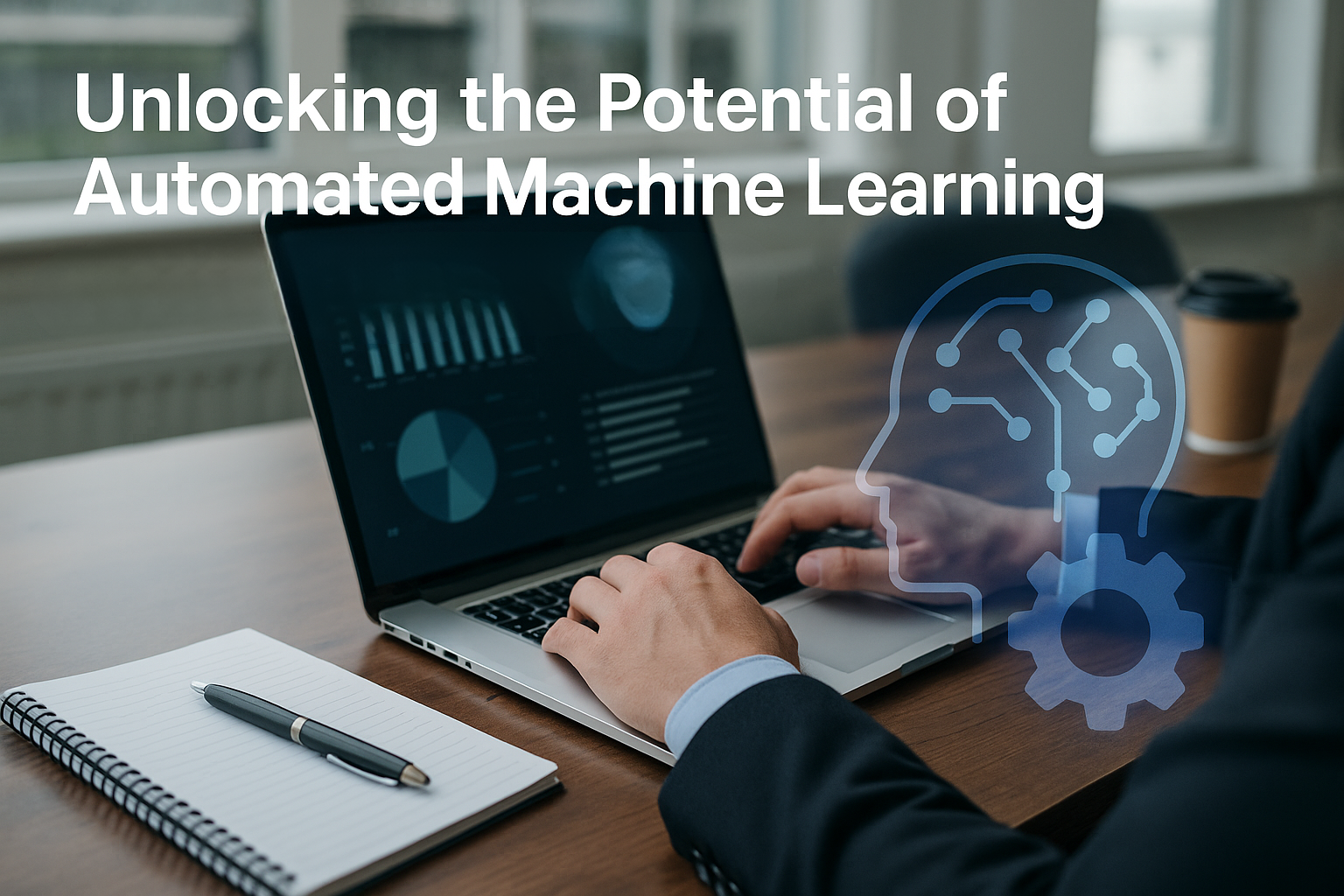
Introduction to AutoML
What Is AutoML?
AutoML, or Automated Machine Learning, is like having a personal data scientist on autopilot. It automates the process of building machine learning models—right from data preprocessing to model deployment—saving tons of time and effort. It’s a game-changer for businesses and data enthusiasts alike who want to leverage machine learning without diving deep into code and complex statistics.
Why Does AutoML Matter Today?
Machine learning has become vital for decision-making, personalization, and automation. However, not every company has the luxury of hiring a full team of AI experts. AutoML levels the playing field by enabling non-experts to build and deploy powerful ML models. In a world hungry for insights and automation, this is a huge deal.
Manual ML vs. AutoML
Traditional ML is a slow, hands-on process involving data cleaning, feature engineering, algorithm selection, model tuning, and validation. AutoML simplifies or fully automates these steps using advanced algorithms, dramatically accelerating the time from idea to deployment.
How AutoML Works
Key Components of AutoML Pipelines
Think of AutoML as a factory line for models. It consists of:
-
Data preprocessing: Cleans and transforms raw data.
-
Feature engineering: Identifies useful patterns or variables.
-
Model selection: Chooses the best algorithm for the task.
-
Hyperparameter tuning: Fine-tunes settings for optimal performance.
-
Model evaluation: Validates the model on test data.
-
Deployment: Makes the model ready for real-world use.
From Raw Data to Predictions – The Flow
You start with a dataset—say, customer churn data. AutoML tools handle missing values, encode categorical variables, run multiple algorithms, test them, tune them, and spit out the best model, sometimes with a few lines of input.
Algorithms Behind AutoML
AutoML often relies on techniques like:
-
Bayesian optimization
-
Grid search and random search
-
Neural architecture search (NAS)
-
Meta-learning
-
Ensemble learning
These allow tools to explore countless model configurations efficiently.
Major Benefits of AutoML
Democratizing AI Development
No PhD? No problem. AutoML makes ML accessible to marketers, analysts, and developers who don’t have a deep AI background.
Time and Cost Efficiency
AutoML reduces the time needed to build models from weeks to hours. That’s a huge cost-saver for startups and enterprises alike.
Reducing Human Error
Humans make mistakes, especially when working with complex data and models. AutoML tools follow consistent, reliable processes that minimize such risks.
Speeding Up Experimentation
Want to test five hypotheses on your sales data? AutoML lets you do that in record time, enabling rapid iteration and innovation.
Top AutoML Tools in 2025
Google Cloud AutoML
Best for businesses already in Google’s ecosystem. It’s user-friendly, robust, and supports custom training for vision, language, and tabular data.
H2O.ai Driverless AI
Offers great visualization, explainability, and speed. Known for automatic feature engineering and interpretability.
Microsoft Azure AutoML
Tightly integrated with Azure ML Studio. Great for deploying models quickly into cloud workflows.
Amazon SageMaker Autopilot
Part of the AWS suite. Ideal for scalable solutions that need tight cloud integration.
DataRobot
A leader in enterprise AutoML. It shines in collaboration, insights, and governance features.
Open-Source Tools: Auto-sklearn, TPOT, FLAML
-
Auto-sklearn: Builds on scikit-learn with automated pipelines.
-
TPOT: Uses genetic programming to optimize pipelines.
-
FLAML: Lightweight, fast, and low on resource consumption.
Real-World Use Cases of AutoML
Healthcare and Diagnostics
AutoML is revolutionizing medical imaging, disease detection, and personalized treatment by building accurate predictive models from medical records and scans.
Finance and Risk Management
Banks use AutoML to detect fraud, predict defaults, and automate credit scoring—minimizing risk and improving accuracy.
Retail and Customer Insights
Want to know which customers will buy again? AutoML helps retailers predict trends, personalize offers, and optimize inventory.
Manufacturing and Predictive Maintenance
By analyzing equipment sensor data, AutoML can forecast breakdowns before they happen—saving millions in downtime.
Marketing and Personalization
From dynamic pricing to ad targeting, AutoML drives tailored campaigns that convert better and waste less.
Challenges and Limitations of AutoML
Model Interpretability
Some AutoML models—especially ensembles and deep learning—are hard to interpret. This can be a dealbreaker in regulated industries.
Data Quality Dependency
Garbage in, garbage out. If your data is noisy, AutoML won’t magically fix it. Data quality still reigns supreme.
Black Box Problem
Some AutoML outputs are so complex, even experts can’t fully explain the decisions. That’s risky for high-stakes use cases like healthcare or law.
Domain Expertise Still Matters
AutoML can do a lot, but understanding the business context, metrics, and ethical implications? That’s still very human.
Future of AutoML
Integration with MLOps
AutoML will evolve as part of larger MLOps workflows—handling version control, model tracking, and CI/CD for models.
Edge AI and Real-Time Predictions
As AutoML gets leaner, expect models to be deployed on edge devices—from phones to factory robots—for real-time intelligence.
The Rise of Zero-Code Platforms
Drag, drop, and deploy. With zero-code tools on the rise, AutoML is becoming more like Canva for AI—empowering even non-tech teams.
How to Get Started with AutoML
Prerequisites for Using AutoML Tools
-
Clean datasets
-
Basic ML knowledge (helpful, not required)
-
Cloud credits or local computing resources
Learning Path for Beginners
Start with Google AutoML or H2O.ai, follow online tutorials, and try small personal projects—like predicting your electricity bill or email click-through rate.
Tips to Maximize AutoML Results
-
Always validate outputs with domain experts.
-
Use AutoML as a fast prototype, not the final say.
-
Monitor model drift and performance regularly.
Conclusion
AutoML is not just a buzzword—it’s the future of scalable, efficient, and accessible AI. Whether you’re a solo entrepreneur, a startup founder, or part of a large enterprise, AutoML gives you the power to build smart, data-driven solutions faster and smarter.
It won’t replace data scientists entirely, but it does empower more people to think like one—and that’s a win for innovation everywhere.
FAQs
1. Is AutoML replacing data scientists?
Nope! It’s making their jobs easier by automating routine tasks, so they can focus on strategy, research, and fine-tuning.
2. Can I use AutoML without coding?
Yes! Many tools offer no-code interfaces that allow you to upload data, configure options, and get results with just a few clicks.
3. Is AutoML suitable for small businesses?
Absolutely. With cloud-based pay-as-you-go models, small businesses can benefit without heavy upfront investments.
4. What industries benefit most from AutoML?
Healthcare, finance, retail, manufacturing, marketing, logistics—you name it. If there’s data, AutoML can help.
5. How does AutoML ensure model accuracy?
Through automated hyperparameter tuning, cross-validation, and ensemble methods, AutoML strives to deliver the best model for your data.

